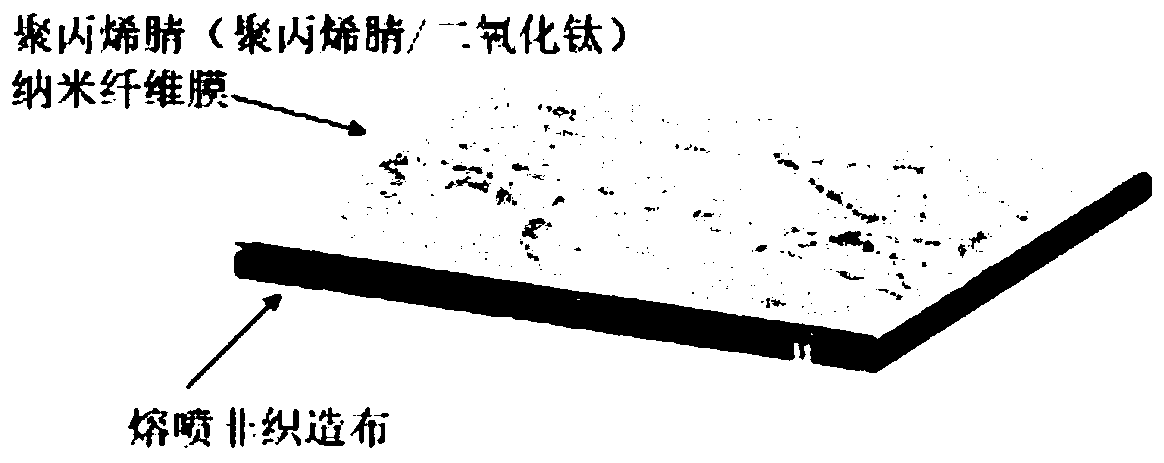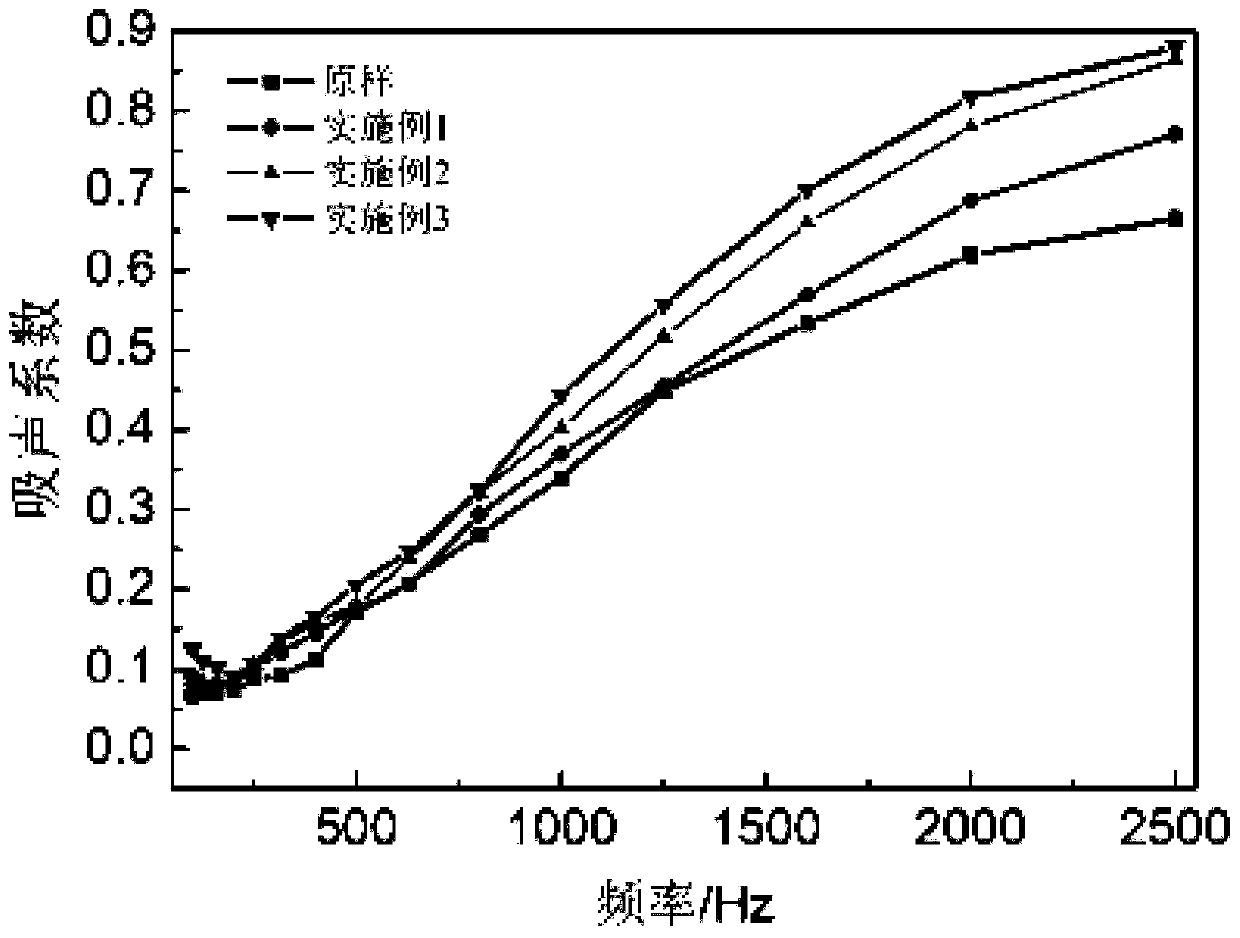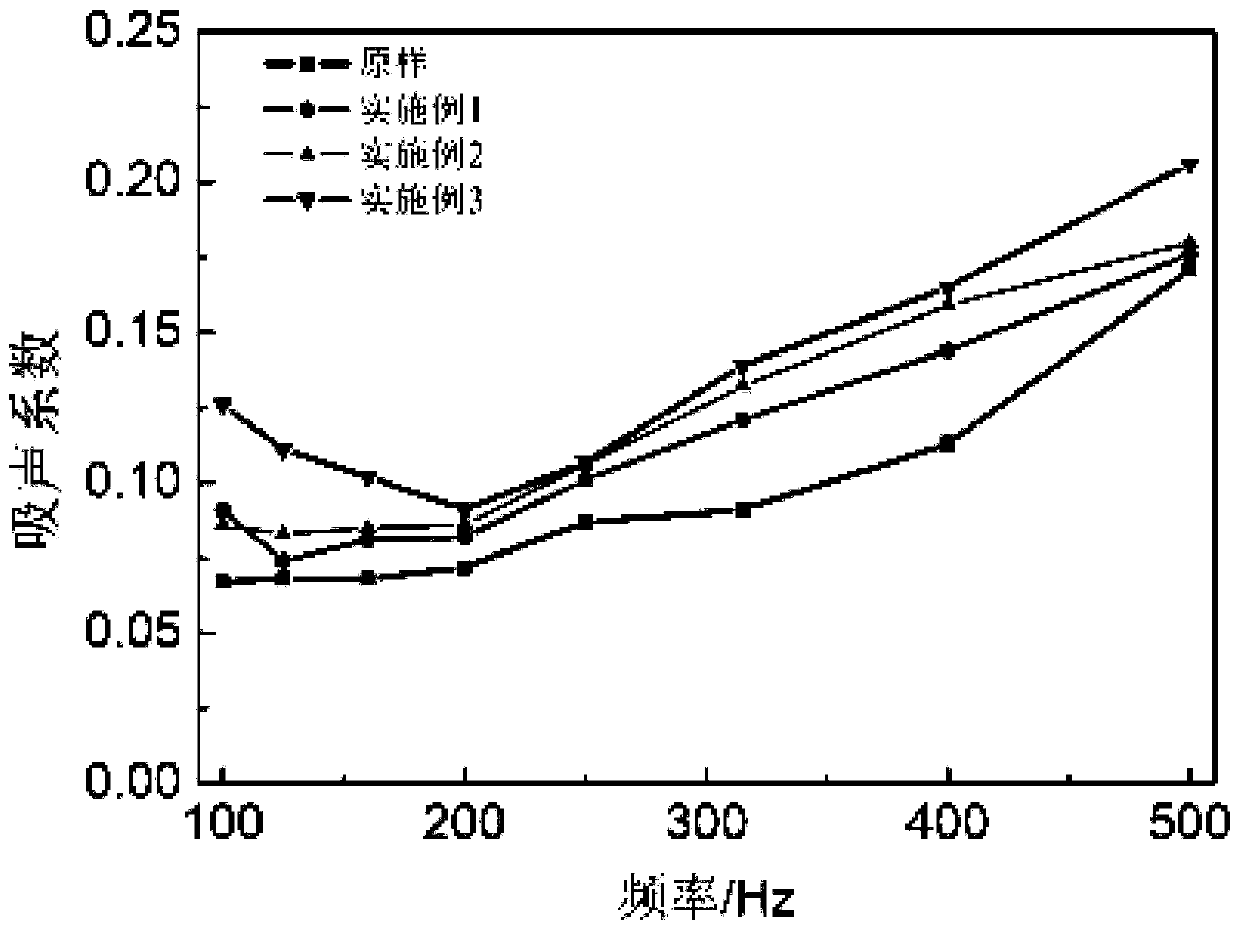Light medium- and low-frequency sound absorption material and preparation method thereof
A sound-absorbing material and low-frequency technology, applied in coatings, non-woven fabrics, electrospinning, etc., can solve the problems of poor low-frequency sound-absorbing effect, achieve low environmental pollution, easy preparation, and improve mid-low frequency sound-absorbing performance Effect
- Summary
- Abstract
- Description
- Claims
- Application Information
AI Technical Summary
Problems solved by technology
Method used
Image
Examples
Embodiment 1
[0028] A lightweight medium-low frequency sound-absorbing material and its preparation method:
[0029] Step (1): prepare polyacrylonitrile spinning solution, polyacrylonitrile is added in N,N-dimethylformamide, wherein, the concentration of polyacrylonitrile is respectively 6wt% (such as N,N-dimethylformamide If the amide is 4.7g, then add polyacrylonitrile (0.3g), stir magnetically for 20-24h, and obtain a uniform solution;
[0030] Step (2): Electrospinning is performed on the base of the nonwoven fabric: the applied voltage is 10 kV, the spinning speed is 1 mL / h, and the spinning distance is 12 cm.
[0031] Step (3): dry treatment at room temperature to obtain a nanofiber composite nonwoven fabric sound-absorbing material; the sound absorption coefficient is as follows figure 2 (100-2500Hz), image 3 (100-500Hz) shown.
Embodiment 2
[0033] A lightweight medium-low frequency sound-absorbing material and its preparation method:
[0034] Step (1): prepare polyacrylonitrile spinning solution, polyacrylonitrile is added in N,N-dimethylformamide, wherein, the concentration of polyacrylonitrile is respectively 8wt% (such as N,N-dimethylformamide If the amide is 4.6g, then add polyacrylonitrile (0.4g), stir magnetically for 20-24h, and obtain a uniform solution;
[0035] Step (2): Electrospinning is performed on the base of the nonwoven fabric: the applied voltage is 10 kV, the spinning speed is 1 mL / h, and the spinning distance is 12 cm.
[0036] Step (3): dry treatment at room temperature to obtain a nanofiber composite nonwoven fabric sound-absorbing material; the sound absorption coefficient is as follows figure 2 (100-2500Hz), image 3 (100-500Hz) shown.
Embodiment 3
[0038] A lightweight medium-low frequency sound-absorbing material and its preparation method:
[0039] Step (1): prepare polyacrylonitrile spinning solution, polyacrylonitrile is added in N,N-dimethylformamide, wherein, the concentration of polyacrylonitrile is respectively 10wt% (such as N,N-dimethylformamide If the amide is 4.5g, then add polyacrylonitrile (0.5g), stir magnetically for 20-24h, and obtain a uniform solution;
[0040] Step (2): Electrospinning is performed on the base of the nonwoven fabric: the applied voltage is 10 kV, the spinning speed is 1 mL / h, and the spinning distance is 12 cm.
[0041] Step (3): dry treatment at room temperature to obtain a nanofiber composite nonwoven fabric sound-absorbing material; the sound absorption coefficient is as follows figure 2 (100-2500Hz), image 3 (100-500Hz) shown.
PUM
| Property | Measurement | Unit |
|---|---|---|
| Thickness | aaaaa | aaaaa |
Abstract
Description
Claims
Application Information
 Login to View More
Login to View More - R&D
- Intellectual Property
- Life Sciences
- Materials
- Tech Scout
- Unparalleled Data Quality
- Higher Quality Content
- 60% Fewer Hallucinations
Browse by: Latest US Patents, China's latest patents, Technical Efficacy Thesaurus, Application Domain, Technology Topic, Popular Technical Reports.
© 2025 PatSnap. All rights reserved.Legal|Privacy policy|Modern Slavery Act Transparency Statement|Sitemap|About US| Contact US: help@patsnap.com



